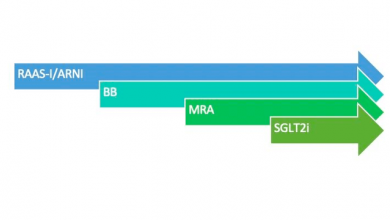Search results
Author(s):
Gurleen Kaur
,
Swati Chand
,
Devesh Rai
,
et al
Added:
1 year ago
Author(s):
Jean-Claude Tardif
,
Therese Heinonen
Added:
3 years ago
Atherosclerotic cardiovascular disease is the result of a continuous and deleterious interaction between components of the vascular wall and the circulating blood. Circulating lipids and lipoproteins play a significant role in the initiation of fatty streaks and the subsequent progression to complex and vulnerable atherosclerotic plaques. The important role that circulating lipids play in…
View more
Author(s):
Michael L Ridner
,
Mark E Davis
Added:
3 years ago
Since 1999, cardiac computed tomographic angiography (CCTA) has evolved into the most innovative approach to cardiac imaging to emerge in over 30 years. The adoption and application of this remarkable technology represents a true revolution in the evaluation of patients for cardiac problems. The evaluation of patients with potential cardiac problems traditionally uses a variety of non-invasive or…
View more
MXR for Cardiology
Author(s):
David Bloom
,
Michael K Southworth
,
Jonathan R Silva
,
et al
Added:
1 year ago
Article
Author(s):
Ankit Agrawal
,
Toshiaki Isogai
,
Shashank Shekhar
,
et al
Added:
1 year ago
Author(s):
Fay Lin
,
James K Min
Added:
3 years ago
Cardiovascular disease (CVD) afflicts greater than 70 million patients in the US alone, and accounts for over half of all deaths. Non-invasive cardiac imaging modalities are used to provide enhanced methods of diagnosis of CVD, guidance of patient-specific therapy, and prognostication of cardiac-related risk.
Non-invasive cardiovascular imaging has traditionally been stratified into two distinct…
View more
Author(s):
Neal M Dixit
,
Shivani Shah
,
Boback Ziaeian
,
et al
Added:
2 years ago
Author(s):
Domenic A Sica
Added:
3 years ago
A not inconsequential number of therapeutic agents or chemical substances can increase blood pressure (BP). The degree to which BP increases determines whether a specific definitional threshold has been crossed, at which time the patient is designated as having become hypertensive. Drugs that cause hypertension do so by either causing vasoconstriction, increasing extracellular fluid (ECF) volume,…
View more
Author(s):
Matthew J Budoff
Added:
3 years ago
Cardiac computed tomography (CT) has evolved greatly over the last 20 years. This article reviews its current clinical uses, and describes some of the potential for even greater utility in the near future. Electron beam tomography (EBT) was developed 20 years ago specifically for cardiac imaging. Although the technique can quantify ventricular anatomy and function1 as well as myocardial…
View more
Author(s):
Sophia Zoungas
,
John Chalmers
,
Anushka Patel
Added:
3 years ago
Summary of the ADVANCE Trial Findings
The ADVANCE trial was a factorial, randomised study of 11,140 individuals with type 2 diabetes from over 200 collaborating centres in 20 countries from Asia, Australasia, Europe and North America. Participants with either a history of macrovascular or microvascular disease or at least one major risk factor for cardiovascular disease and any initial level of…
View more













 « First
« First